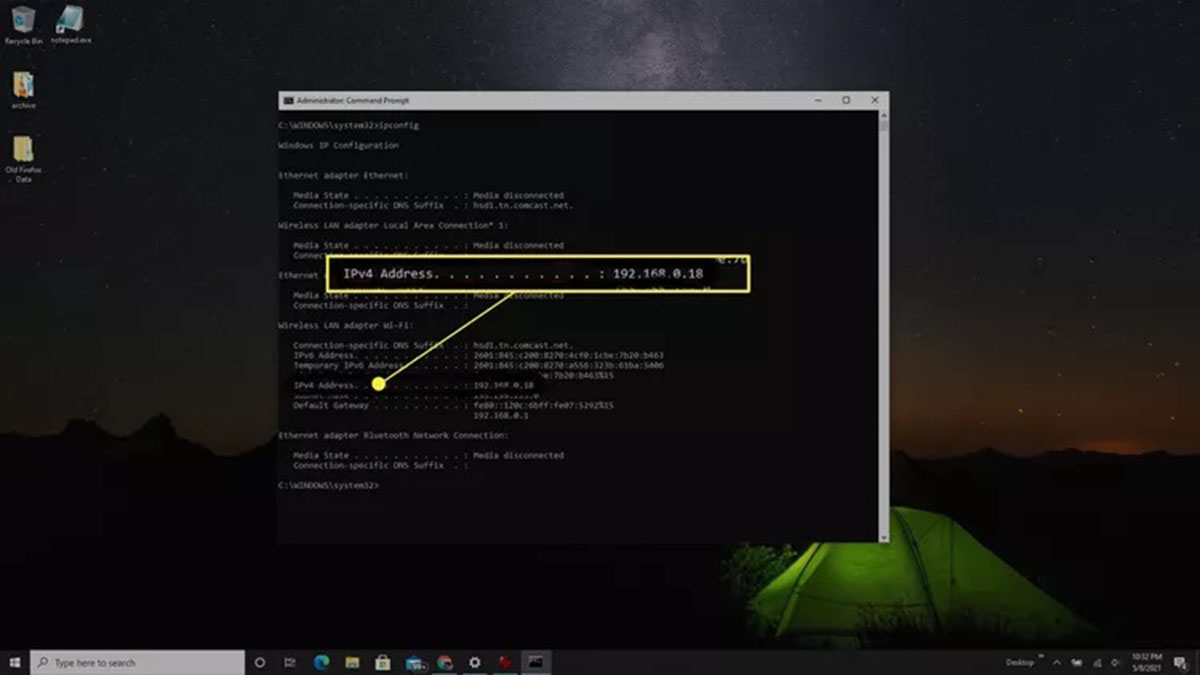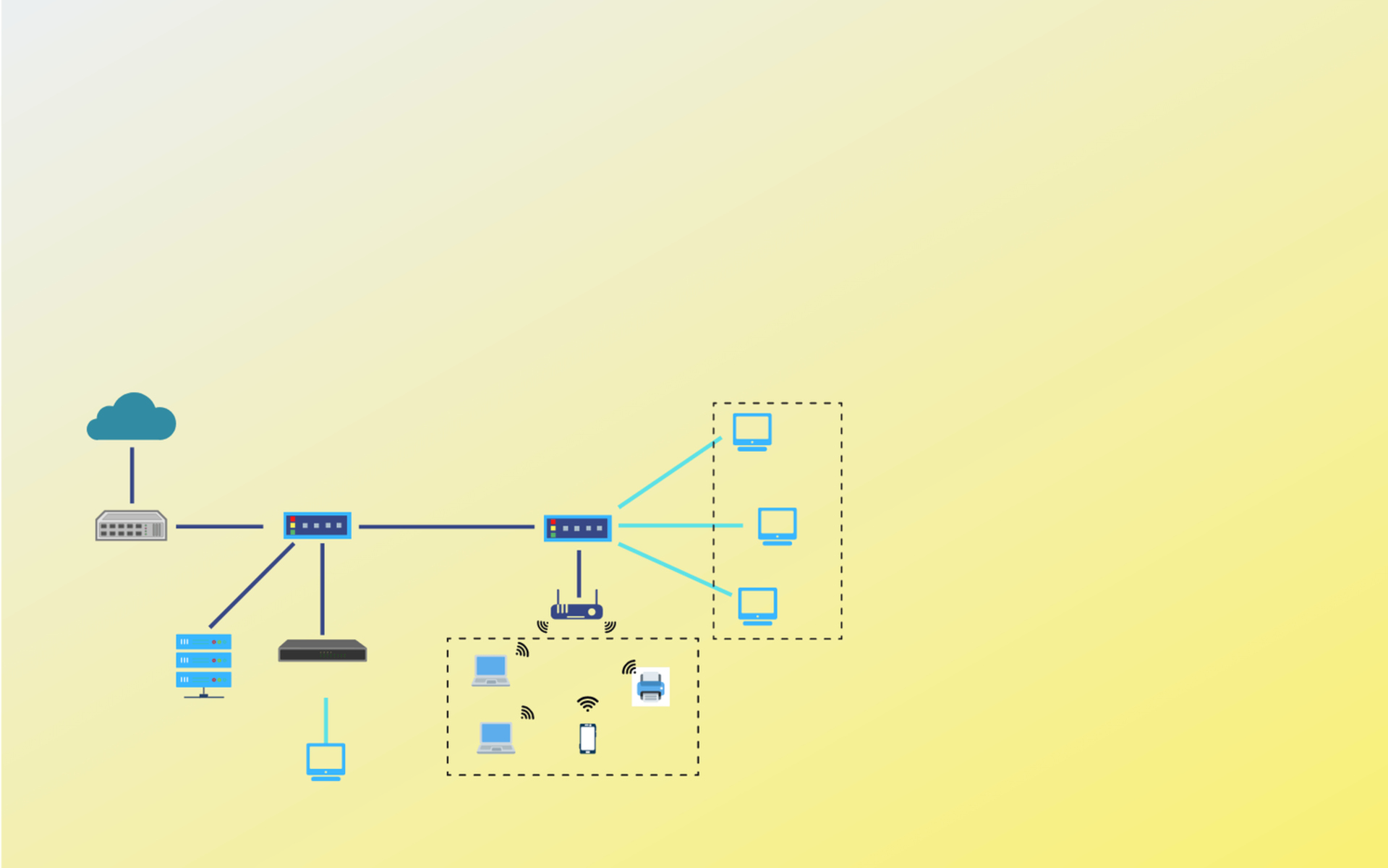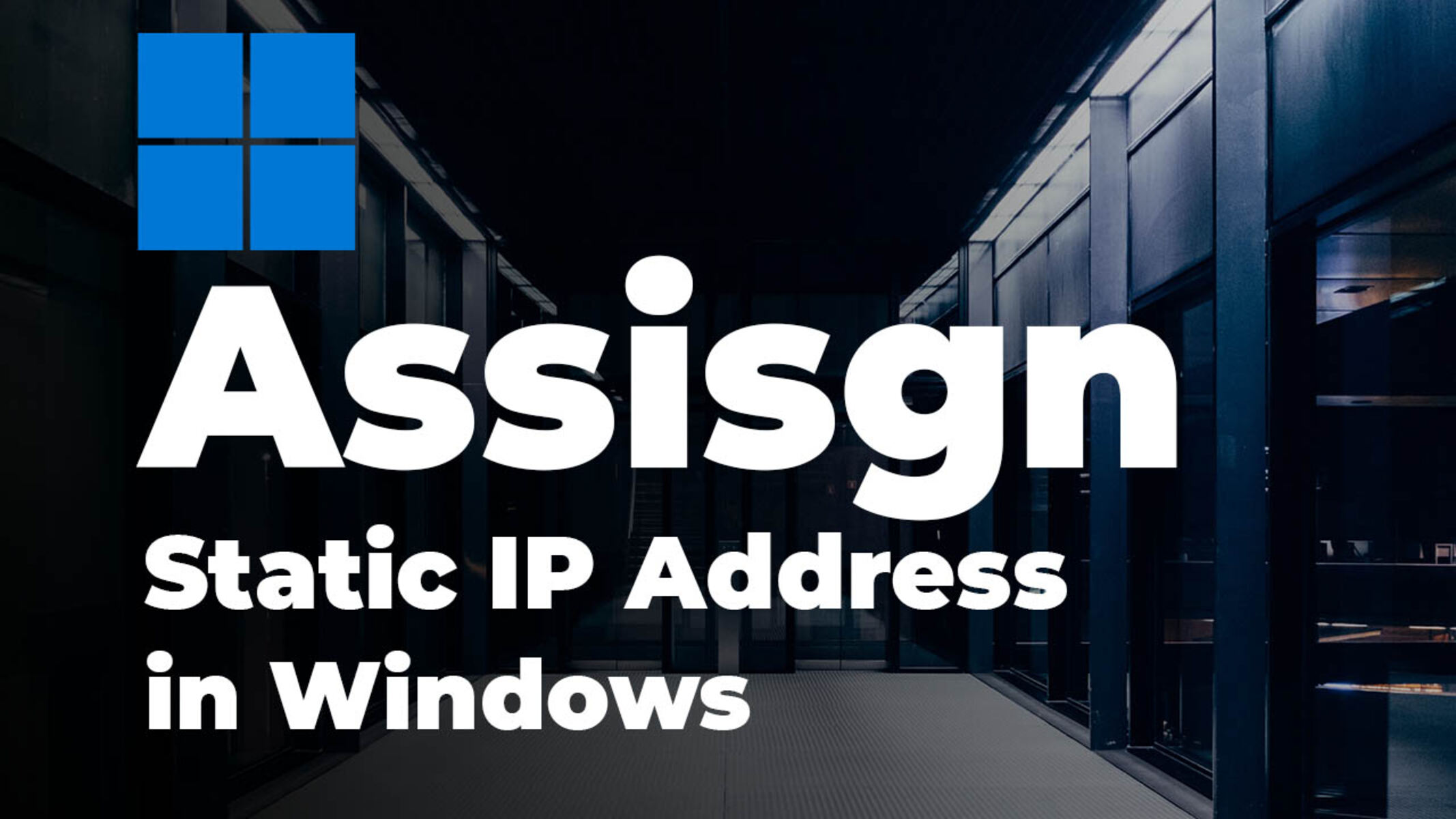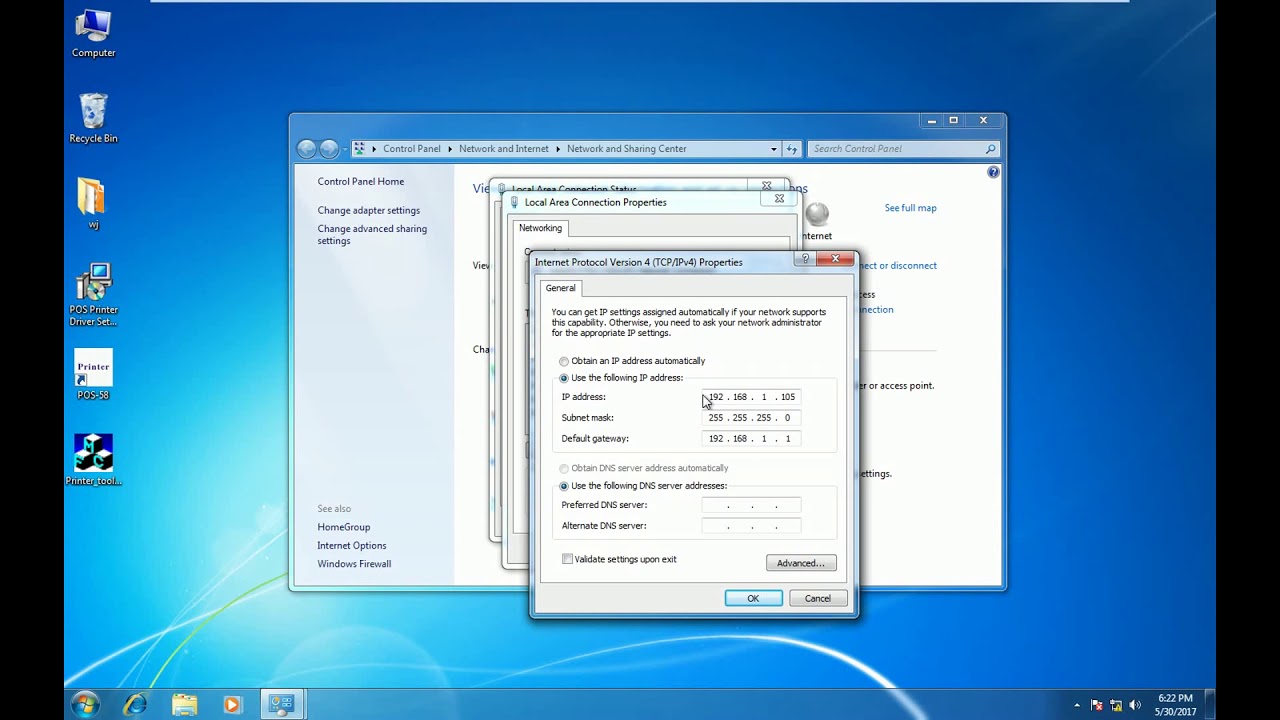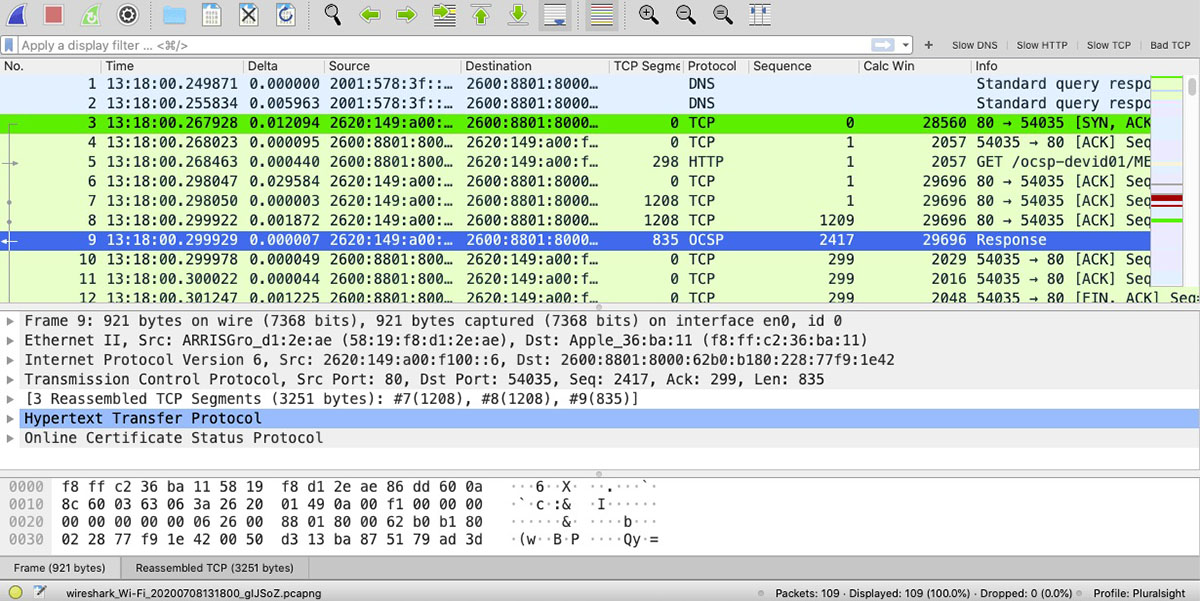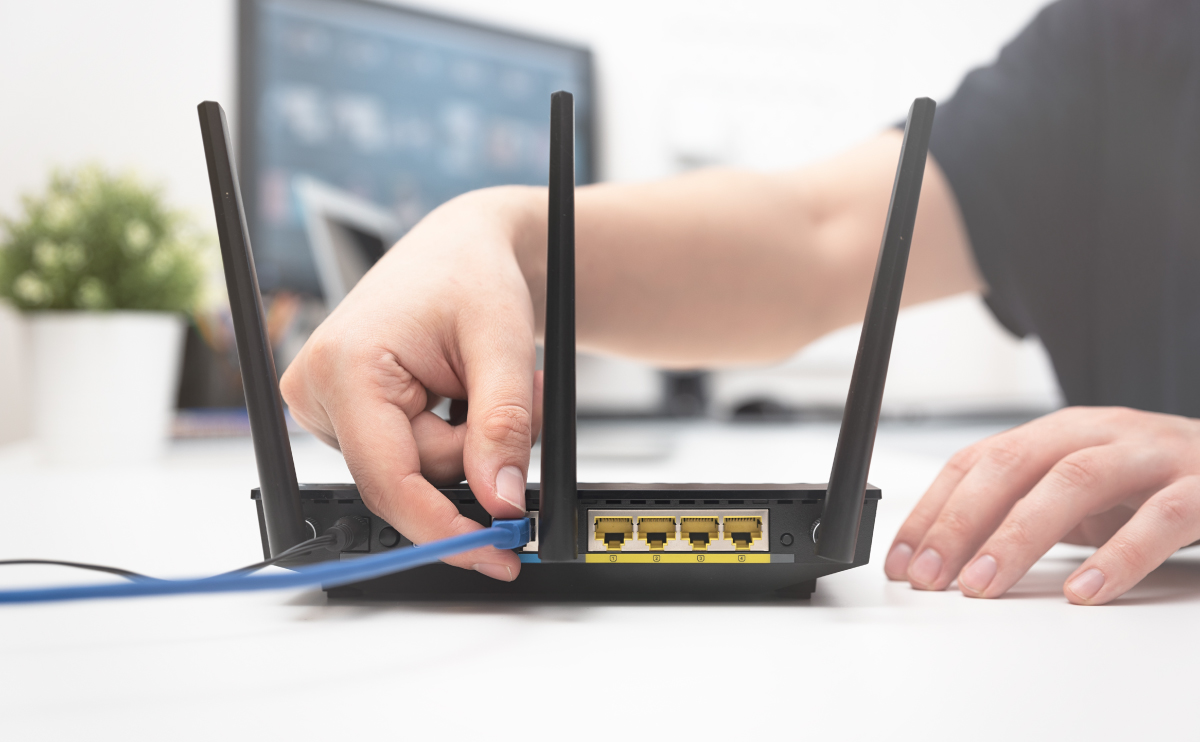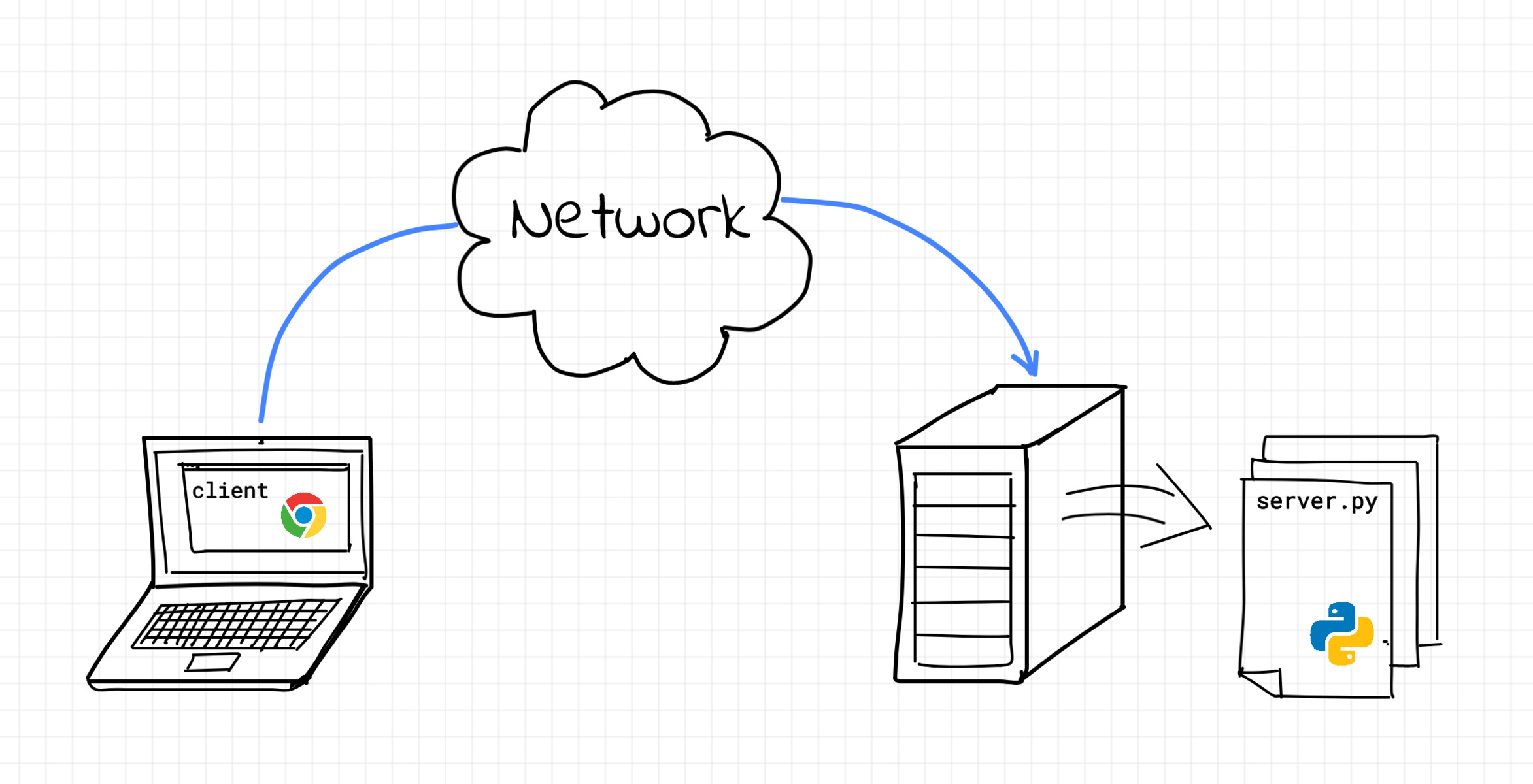Introduction
When it comes to computer networking, TCP/IP is one of the most fundamental and widely used protocols. It forms the backbone of the internet and enables devices to communicate with each other across networks. Understanding TCP/IP is essential for anyone involved in the field of networking or web development. In this article, we will explore what TCP/IP is, delve into its different layers, discuss addressing schemes, and highlight some important protocols that operate within the TCP/IP framework.
Transmission Control Protocol/Internet Protocol, commonly known as TCP/IP, is a suite of communication protocols used to establish connectivity between devices on a network. It provides a standardized set of rules and procedures that govern how data is transmitted, routed, and received across interconnected networks. TCP/IP was developed in the 1970s and has since become the de facto standard for network communication.
TCP/IP operates on a layered architecture, meaning it is divided into different layers, each responsible for specific functions. This layered approach allows for more efficient and modular design, making it easier to troubleshoot and expand networks.
The five layers of TCP/IP are the Physical Layer, Data Link Layer, Network Layer, Transport Layer, and Application Layer. Each layer has its own set of protocols and functions, which we will explore further in the following sections.
Additionally, TCP/IP uses a unique addressing scheme to identify individual devices on a network. This is crucial for routing data to the correct destination. The two most commonly used versions of IP addressing within TCP/IP are IPv4 and IPv6. We will discuss these addressing schemes and their differences in more detail.
Furthermore, TCP/IP encompasses several important protocols that facilitate various communication tasks. Some of these protocols include HTTP (Hypertext Transfer Protocol), DNS (Domain Name System), TCP (Transmission Control Protocol), UDP (User Datagram Protocol), ICMP (Internet Control Message Protocol), and FTP (File Transfer Protocol). Understanding the role and function of these protocols is key to comprehending how TCP/IP operates in practice.
By gaining a solid understanding of TCP/IP, you will be equipped with the knowledge to troubleshoot network issues, optimize network performance, and develop applications that leverage this powerful protocol suite. So, let’s dive into each layer, understanding the addressing schemes, and exploring important protocols within the TCP/IP framework.
What is TCP/IP?
TCP/IP, which stands for Transmission Control Protocol/Internet Protocol, is a set of communication protocols that allows devices to connect and communicate over a network. It is the defining protocol suite used to enable data transmission on the internet and is responsible for establishing and maintaining reliable connections between devices.
TCP/IP was initially developed in the 1970s by the U.S. Department of Defense as a means of connecting different computers and networks together. It has since evolved and become the standard protocol suite used in modern networking environments, including the internet. TCP/IP provides a reliable and efficient way to exchange data between devices, ensuring the integrity and accuracy of the information being transmitted.
At its core, TCP/IP is a layered protocol, meaning it divides the networking functionality into logical layers, with each layer having its own set of protocols and responsibilities. This modular design allows for scalability, ease of implementation, and interoperability across different network architectures and devices.
The four layers of TCP/IP are the Network Interface Layer, Internet Layer, Transport Layer, and Application Layer. Each layer plays a specific role in the communication process.
The Network Interface Layer handles the physical connection between devices and manages the transmission of raw data in the form of bits. This layer deals with network hardware and protocols such as Ethernet or Wi-Fi.
The Internet Layer is responsible for addressing and routing packets across different networks. It handles the logical addressing of devices using IP (Internet Protocol) addresses and ensures that packets are correctly routed from the source to the destination.
The Transport Layer provides end-to-end communication services and ensures that data is reliably transmitted between devices. It supports two primary protocols: TCP (Transmission Control Protocol) and UDP (User Datagram Protocol). TCP is connection-oriented and guarantees reliable and ordered delivery of data, making it ideal for applications that require error-free transmission. UDP, on the other hand, is connectionless and provides a lightweight communication mechanism for applications that prioritize speed and efficiency over reliability.
The Application Layer is the topmost layer and is responsible for providing specific services to end-users. It includes various protocols such as HTTP (Hypertext Transfer Protocol) for web browsing, SMTP (Simple Mail Transfer Protocol) for email communication, and FTP (File Transfer Protocol) for file transfers.
Overall, TCP/IP is a critical protocol suite that underpins internet communication and allows for seamless data exchange between devices. Its layered architecture, combined with a reliable and efficient transmission mechanism, enables the internet to function as we know it today. Understanding TCP/IP is crucial for network administrators, developers, and anyone involved in the world of networking.
TCP/IP Layers
TCP/IP operates on a layered architecture, which means that the protocol suite is divided into different layers, each with its own set of protocols and responsibilities. This layered approach allows for modularity, scalability, and ease of troubleshooting. The TCP/IP layers provide a systematic way to manage and handle network communication. Let’s take a closer look at each layer in the TCP/IP model:
Layer 1: Physical Layer
The Physical Layer is the lowest layer in the TCP/IP model and is responsible for the transmission and reception of raw data bits over physical transmission media. This layer defines the electrical, mechanical, and functional specifications for the network hardware, such as cables and network interface cards. It deals with physical connections, signaling, and data encoding schemes.
Layer 2: Data Link Layer
The Data Link Layer establishes a reliable link between two directly connected devices, allowing for the error-free transfer of data frames. It handles protocols such as Ethernet, which defines the standards for how data is formatted and organized in packets. This layer also manages network access, media access control, and error detection and correction.
Layer 3: Network Layer
The Network Layer is responsible for logical addressing and routing in TCP/IP networks. It uses IP (Internet Protocol) to assign unique IP addresses to devices and determine the best path for packet delivery. This layer ensures that packets are correctly routed between different networks, regardless of their physical location. It also handles fragmentation and reassembly of packets if necessary.
Layer 4: Transport Layer
The Transport Layer provides end-to-end communication services between devices on a network. It is responsible for segmenting data into smaller units, known as segments, and ensuring their reliable and ordered delivery. The two main protocols at this layer are TCP (Transmission Control Protocol) and UDP (User Datagram Protocol). TCP offers reliable, connection-oriented communication, while UDP provides faster, connectionless communication but without guarantees for delivery.
Layer 5: Application Layer
The Application Layer is the highest layer in the TCP/IP model and is responsible for providing services to end-users or applications. It includes a wide range of protocols such as HTTP, FTP, DNS (Domain Name System), SMTP, and many more. These protocols define the rules and procedures for different functions, such as web browsing, file transfer, email communication, and name resolution.
In summary, the TCP/IP layers provide a structured framework for handling network communication. Each layer has its own specific tasks and protocols, working together to ensure reliable, efficient, and seamless data transmission across networks. Understanding the TCP/IP layers is crucial for network administrators, developers, and anyone involved in networking to diagnose and troubleshoot issues, optimize network performance, and develop robust applications.
Layer 1: Physical Layer
At the bottom of the TCP/IP model is the Physical Layer, responsible for transmitting and receiving raw data bits over physical transmission media. This layer deals with the physical aspects of network communication, including electrical, mechanical, and functional specifications of the network hardware. Let’s dive deeper into the functions and components of the Physical Layer:
Transmission Media: The Physical Layer defines the types of transmission media that can be used for network communication. This includes copper cables, fiber-optic cables, and wireless transmission mediums such as radio waves or infrared signals. The choice of transmission media depends on factors such as bandwidth requirements, distance of communication, and environmental considerations.
Encoding and Signaling: The Physical Layer determines how the data is encoded and transmitted over the chosen transmission media. It specifies the modulation techniques, bit encoding schemes, and synchronization methods to ensure that data can be accurately transmitted and interpreted by the receiving device. Common encoding schemes include Manchester encoding, Differential Manchester encoding, and Non-Return to Zero (NRZ) encoding.
Network Hardware: The Physical Layer deals with network hardware components, such as network interface cards (NICs) and switches, that enable devices to connect to a network. These devices implement the protocols and standards defined by the Physical Layer to transmit and receive data bits. The Physical Layer also handles factors like pin configurations, voltage levels, and physical connectors that ensure compatibility between devices.
Transmission Modes: The Physical Layer supports different transmission modes, including simplex, half-duplex, and full-duplex. In simplex mode, data can only flow in one direction, such as in television broadcasting. In half-duplex mode, data can be transmitted in both directions, but not simultaneously, as in walkie-talkies. Full-duplex mode allows data to be sent and received simultaneously, such as in a telephone conversation.
Error Detection and Correction: The Physical Layer is responsible for detecting and correcting errors that may occur during data transmission. It employs techniques such as parity checks, cyclic redundancy checks (CRC), and error-correcting codes to ensure data integrity. Error detection and correction mechanisms help identify and fix any errors introduced during the transmission process, improving the overall reliability of data communication.
By providing a reliable medium for data transmission, the Physical Layer serves as the foundation for network communication. Its electrical, mechanical, and functional specifications allow devices to connect, transmit and receive raw data bits, ensuring that information can be exchanged between network nodes. Understanding the Physical Layer is essential for network administrators and technicians, as it helps them diagnose and troubleshoot issues related to hardware failures, cable faults, signal attenuation, or interference.
Layer 2: Data Link Layer
The Data Link Layer is the second layer of the TCP/IP model and is responsible for establishing a reliable link between two directly connected devices. It ensures the error-free transmission of data frames across a physical connection. Let’s explore the functions and protocols associated with the Data Link Layer:
Logical Link Control (LLC): The Data Link Layer includes the Logical Link Control sublayer that provides services for data link layer protocols. LLC handles flow control, error control, and frame synchronization to ensure reliable data transmission. It maintains logical connections between devices and facilitates error detection and recovery mechanisms.
Media Access Control (MAC): The MAC sublayer of the Data Link Layer is responsible for managing access to the physical transmission media. It governs the rules and protocols for devices to access and transmit data on the network. One commonly known protocol at this layer is Ethernet, which determines how data is formatted and transmitted in packets.
Error Detection and Correction: The Data Link Layer incorporates error detection and correction mechanisms to ensure data integrity during transmission. These mechanisms, such as checksums or cyclic redundancy checks (CRC), verify the integrity of the received data and detect any errors that might have occurred during transmission. If errors are detected, the Data Link Layer can request the retransmission of the faulty frame.
Frame Delimiting and Synchronization: The Data Link Layer adds delimiters at the beginning and end of each frame to indicate its boundaries. These delimiters help synchronize the receiving device with the incoming data frames, ensuring proper reception and accurate data extraction. Synchronization is crucial to prevent data loss or corruption during transmission.
Addressing: The Data Link Layer uses physical addressing to identify devices on the same local network. Each network interface card (NIC) is assigned a unique MAC address, typically represented as a 48-bit hexadecimal number. The MAC address allows devices to communicate within the same broadcast domain. When a device wants to transmit data to another device on the same network, it uses the destination MAC address to address the data frame.
Flow Control: The Data Link Layer manages the flow of data between two connected devices. Flow control techniques ensure that the receiving device can handle the incoming data without being overwhelmed. Examples of flow control mechanisms include sliding window protocols, where the receiver informs the sender on how much data can be transmitted at a given time.
The Data Link Layer plays a crucial role in delivering error-free data frames from one device to another. It handles error detection, flow control, addressing, and synchronization to ensure reliable and efficient data transmission. Understanding the Data Link Layer is essential for network administrators and technicians, as it enables them to troubleshoot issues related to link failures, data corruption, or network congestion at this layer of the TCP/IP model.
Layer 3: Network Layer
The Network Layer is the third layer in the TCP/IP model and is responsible for logical addressing and routing of packets across different networks. Its primary function is to ensure the delivery of data packets from the source host to the destination host. Let’s delve into the features and protocols associated with the Network Layer:
Logical Addressing: The Network Layer introduces logical addressing using IP (Internet Protocol) addresses. IP addresses are unique identifiers assigned to network devices and are used to identify the source and destination hosts across different networks. IPv4 (Internet Protocol version 4) and IPv6 (Internet Protocol version 6) are the two main versions of IP addressing schemes.
Routing: The Network Layer is responsible for finding the most efficient path for packet transmission from the source to the destination. It uses routing algorithms and protocols to determine the next hop or intermediary devices that will process and forward the packets based on the IP addresses. The routing process involves examining routing tables, which contain information about network topology and available paths.
Packet Fragmentation and Reassembly: The Network Layer handles packet fragmentation when the data packet size exceeds the maximum transmission unit (MTU) of the network. It breaks down the packet into smaller fragments that can be transmitted across the network and reassembles them at the receiving end. Fragmentation ensures that large packets can traverse networks with smaller MTUs without losing data or causing network congestion.
Logical Network Address Translation (NAT): The Network Layer supports Network Address Translation (NAT), which allows multiple devices in a local network to share a single public IP address. NAT translates the private IP addresses used within the local network into a single public IP address for communication with devices outside the network. This conserves the limited availability of public IP addresses and enhances network security.
Internet Protocol (IP): IP is the core protocol of the Network Layer and provides the addressing and routing capabilities necessary for communication between devices. It encapsulates data into packets, adds necessary headers with source and destination IP addresses, and ensures that packets are correctly routed across different networks using IP routing protocols, such as OSPF (Open Shortest Path First) or BGP (Border Gateway Protocol).
The Network Layer is crucial for enabling communication between different networks and ensuring that data is correctly delivered to its intended destination. It handles logical addressing, routing, and fragmentation of packets, allowing data to traverse various networks and reach the desired destination. Understanding the Network Layer is essential for network administrators and engineers to optimize routing paths, troubleshoot connectivity issues, and ensure efficient network performance.
Layer 4: Transport Layer
The Transport Layer is the fourth layer in the TCP/IP model and is responsible for providing end-to-end communication services between devices on a network. It ensures that data is reliably transmitted from the source to the destination host, regardless of the underlying network infrastructure. Let’s explore the key functions and protocols associated with the Transport Layer:
Segmentation and Reassembly: The Transport Layer breaks down data received from the upper layer into smaller units called segments. These segments are then encapsulated with headers that contain important information, including sequence numbers and checksums. At the receiving end, the Transport Layer reassembles the segments into the original data payload.
Connection-oriented versus Connectionless Protocols: The Transport Layer supports both connection-oriented and connectionless communication. Connection-oriented protocols, such as TCP (Transmission Control Protocol), establish a reliable and ordered connection between the source and destination hosts. This ensures that data is delivered accurately and in the correct order. Connectionless protocols, such as UDP (User Datagram Protocol), provide a faster, but less reliable, means of transmitting data without establishing a dedicated connection.
Reliable Delivery: The Transport Layer employs various mechanisms to ensure reliable delivery of data over an unreliable network. This includes error detection through checksums and error correction through retransmission of lost or corrupted packets. Connection-oriented protocols, like TCP, use acknowledgment and retransmission mechanisms to guarantee that all data is successfully received by the destination.
Flow Control: The Transport Layer manages the flow of data between the sender and receiver, preventing the receiver from being overwhelmed by a large amount of incoming data. Flow control mechanisms, such as sliding window protocols, regulate the rate of data transmission based on the receiver’s ability to process and buffer the data.
Multiplexing and Demultiplexing: The Transport Layer allows multiple applications or processes running on the same device to share a single network connection. It assigns unique identifiers, known as ports, to each application or process. This enables the Transport Layer to multiplex outgoing data from different applications onto a single network connection and demultiplex incoming data back to the appropriate application based on the port number.
Port Numbers: Transport Layer protocols use port numbers to identify the specific applications or services running on a device. Well-known port numbers, ranging from 0 to 1023, are assigned to commonly used services like HTTP (port 80) or HTTPS (port 443). Registered port numbers, from 1024 to 49151, are used by applications that have been registered with the Internet Assigned Numbers Authority (IANA). Dynamic or ephemeral port numbers, from 49152 to 65535, are assigned to temporary connections and are randomly chosen by the client.
The Transport Layer is crucial for ensuring reliable and efficient communication between devices on a network. It handles segmentation, reassembly, flow control, and reliable delivery of data, while also managing multiplexing and demultiplexing of application data using port numbers. Understanding the Transport Layer is essential for network administrators and developers, as it enables them to optimize network performance, troubleshoot network issues, and develop applications that rely on robust and efficient data transmission.
Layer 5: Application Layer
The Application Layer is the topmost layer in the TCP/IP model and is responsible for providing services directly to end-users or applications. It enables users to interact with the network and access various services and resources. Let’s explore the functions and protocols associated with the Application Layer:
Service Access: The Application Layer allows applications to access network services. It provides a means for applications to request specific services from the lower layers, such as data transmission or network security services. Examples of services accessed at this layer include email, web browsing, file transfer, remote login, and domain name resolution.
Protocols: The Application Layer encompasses a wide range of protocols, each designed to support specific applications or services. Some popular protocols at this layer include HTTP (Hypertext Transfer Protocol) for web browsing, SMTP (Simple Mail Transfer Protocol) for email communication, FTP (File Transfer Protocol) for file transfers, DNS (Domain Name System) for name resolution, and SSH (Secure Shell) for secure remote login.
Interaction with Users: The Application Layer provides an interface to interact with end-users or applications. It enables users to send requests, receive responses, and provide necessary input to network-based applications. It also handles presentation aspects such as data encoding and decoding, encryption, and user interface interactions.
Non-Application Specific Functions: The Application Layer includes protocols that perform generic functions required by many applications. These functions include addressing, error handling, data transformation and formatting, and end-to-end encryption. Protocols such as SSL/TLS (Secure Sockets Layer/Transport Layer Security) provide secure communication and data encryption for applications that require confidentiality and integrity.
Application Programming Interfaces (APIs): The Application Layer provides APIs that allow developers to interact with the network services and protocols at this layer. APIs provide a set of functions and protocols that enable applications to make use of underlying network services, such as sending HTTP requests, accessing a database, or performing DNS lookups. APIs allow developers to leverage existing network functionality in their applications without having to reinvent the wheel.
The Application Layer serves as the interface between the network and end-users or applications. It provides access to a wide range of services and protocols, enabling users to browse the web, send emails, transfer files, and more. Understanding the Application Layer is important for developers and network administrators to build and maintain applications that rely on network services and to ensure seamless and secure communication between users and the network.
TCP/IP Addressing
TCP/IP addressing is a fundamental aspect of the protocol suite that allows devices to be uniquely identified on a network. It enables the proper routing of data packets across networks and plays a vital role in establishing connections between devices. TCP/IP uses two main addressing schemes: IPv4 (Internet Protocol version 4) and IPv6 (Internet Protocol version 6). Let’s explore these addressing schemes in more detail:
IPv4: IPv4 is the most widely used addressing scheme in TCP/IP networks. It uses a 32-bit address format, represented as four sets of decimal numbers separated by periods (e.g., 192.168.0.1). Each set, or octet, can range from 0 to 255, allowing for approximately 4.3 billion unique addresses. However, with the rapid growth of internet-connected devices, IPv4 address exhaustion has become a significant concern.
IPv6: IPv6 was introduced as a solution to the depletion of IPv4 addresses. It uses a 128-bit address format, represented as eight sets of hexadecimal numbers separated by colons (e.g., 2001:0db8:85a3:0000:0000:8a2e:0370:7334). IPv6 provides a significantly larger address space, allowing for approximately 340 undecillion unique addresses. This vast address space ensures that every device can have a globally unique IP address without the need for address translation techniques.
Address Classes: In IPv4, addresses are divided into different classes based on their network size and structure. The classes include Class A, Class B, Class C, Class D (multicast), and Class E (reserved). Each class has a specific range of network and host addresses, providing flexibility for addressing different network sizes.
Subnetting: Subnetting is a technique used in TCP/IP addressing to divide a network into smaller subnets. Subnetting allows network administrators to create multiple logical networks within a larger network. It provides flexibility in network design, improves network efficiency, and helps manage network resources effectively.
Address Allocation: Address allocation is the process of assigning IP addresses to devices on a network. The Internet Assigned Numbers Authority (IANA) oversees the allocation and management of IP addresses at a global level. Regional Internet Registries (RIRs) distribute IP addresses to Internet Service Providers (ISPs) and other organizations, who then allocate them to end-users and devices.
Dynamic Host Configuration Protocol (DHCP): DHCP is a network protocol that automates the IP address allocation process. It allows devices to obtain IP addresses dynamically from a DHCP server when they connect to a network. DHCP simplifies the management of IP addresses and prevents conflicts in address assignment.
TCP/IP addressing is essential for the proper functioning of the internet and other TCP/IP-based networks. It allows devices to communicate and be uniquely identified, facilitating the routing and delivery of data across networks. Understanding TCP/IP addressing is crucial for network administrators and engineers to effectively manage IP resources, configure network devices, and ensure smooth connectivity between devices on a network.
IPv4
IPv4, or Internet Protocol version 4, is the most widely used addressing scheme in TCP/IP networks. It is the fourth version of the Internet Protocol and provides a structured way to identify devices on a network. IPv4 addresses are 32-bit binary numbers, commonly represented as four sets of decimal numbers separated by periods (e.g., 192.168.0.1). Let’s explore IPv4 in more detail:
Address Format: IPv4 addresses consist of four octets, where each octet can range from 0 to 255. Each octet is represented as an 8-bit binary number, allowing for a total of 256 possible values. The four octets are combined to form a 32-bit binary number, representing a unique IPv4 address.
Address Classes: IPv4 addresses are divided into different classes based on their network size and structure. The classes include Class A, Class B, Class C, Class D (multicast), and Class E (reserved). Each class has a specific range of network and host addresses. Class A addresses have a large network portion and a small host portion, making them suitable for large networks. Class B addresses have a moderate-sized network portion and host portion, suitable for medium-sized networks. Class C addresses have a small network portion and a large host portion, making them ideal for small networks.
Private IP Addresses: IPv4 reserves certain address ranges for private networks that are used within closed networks such as local area networks (LANs). These ranges include 10.0.0.0 to 10.255.255.255, 172.16.0.0 to 172.31.255.255, and 192.168.0.0 to 192.168.255.255. Private IP addresses are not routable on the internet and are used for internal network communication.
Subnet Mask: Along with the IPv4 address, a subnet mask is used to identify the network and host portions of the address. The subnet mask is a 32-bit binary number that effectively divides the IP address into a network address and a host address. It is represented using the same format as the IPv4 address, with each octet indicating the network or host portion.
Address Exhaustion: The 32-bit address space of IPv4 provides around 4.3 billion unique addresses. However, with the exponential growth of internet-connected devices, IPv4 address exhaustion has become a critical concern. The limited number of available addresses led to the adoption of IPv6, which provides a much larger address space.
Transition to IPv6: To overcome the IPv4 address exhaustion issue, the transition to IPv6 has been underway. IPv6 uses a 128-bit address format, providing approximately 340 undecillion unique addresses. IPv6 adoption allows for the continued growth of the internet and the connection of an increasing number of devices.
IPv4 remains a fundamental addressing scheme for communication over TCP/IP networks. Understanding IPv4 allows network administrators and engineers to effectively manage IP addresses, configure network devices, and troubleshoot connectivity issues on IPv4 networks. While the transition to IPv6 is ongoing, IPv4 will continue to be used for the foreseeable future in conjunction with IPv6 through various mechanisms like dual-stack implementations and tunneling technologies.
IPv6
IPv6, or Internet Protocol version 6, is the next-generation addressing scheme in the TCP/IP protocol suite. It was developed to address the limitations of IPv4 and provide an exponentially larger address space to accommodate the growing number of internet-connected devices. IPv6 addresses are 128-bit binary numbers, represented as eight groups of hexadecimal digits separated by colons (e.g., 2001:0db8:85a3:0000:0000:8a2e:0370:7334). Let’s explore IPv6 in more detail:
Address Format: IPv6 addresses are 128 bits long, providing a significantly larger address space compared to IPv4. The longer address allows for approximately 340 undecillion unique addresses, ensuring that every device can have a globally unique IP address. The hexadecimal representation makes IPv6 addresses more concise and easier to read.
Address Types: IPv6 introduces various types of addresses to serve different purposes. The most common type is the unicast address, which identifies a single network interface of a device. Anycast addresses are assigned to multiple interfaces, but data is delivered to the nearest device offering that address. Multicast addresses are used for one-to-many communication, allowing data to be sent to multiple devices simultaneously.
Address Allocations: IPv6 utilizes efficient address allocation techniques. Regional Internet Registries (RIRs) manage and allocate IPv6 addresses to Internet Service Providers (ISPs) and organizations. Unlike IPv4, which uses address classes, IPv6 addresses are typically distributed in fixed-size blocks, regardless of the scale of the network.
IPv4-Compatible and IPv4-Mapped Addresses: IPv6 provides mechanisms to facilitate the transition from IPv4 to IPv6 networks. IPv4-compatible addresses allow IPv6 hosts to communicate directly with IPv4 hosts using special addresses. IPv4-mapped addresses allow IPv6 hosts to represent IPv4 addresses within an IPv6 address format, simplifying the integration of IPv4 devices into an IPv6 network.
Automatic Address Configuration: IPv6 includes a mechanism called Stateless Address Autoconfiguration (SLAAC) that allows devices to configure their IPv6 addresses automatically. With SLAAC, devices use information from neighboring routers to generate their IPv6 addresses and obtain other configuration parameters, reducing the need for manual address assignments.
Addressing Hierarchy: IPv6 introduces a hierarchical addressing structure that allows for efficient routing. The address is divided into a network prefix and an interface identifier. The network prefix represents the network portion of the address and is obtained from a prefix allocated by an ISP. The interface identifier represents the host portion of the address and is typically derived from the device’s MAC address or other unique identifiers.
IPv6 has become increasingly important as the number of internet-connected devices continues to grow exponentially. Its large address space ensures the scalability and continued growth of the internet. While IPv6 adoption is still ongoing, many networks and devices are now IPv6 ready, and transitioning to IPv6 has become a priority for organizations and ISPs. Understanding IPv6 is essential for network administrators and engineers to effectively manage and deploy networks that can accommodate the future demands of the internet.
TCP/IP Protocols
TCP/IP operates using a collection of protocols that define how data is transmitted, routed, and received across networks. These protocols are implemented at various layers of the TCP/IP model and enable different functions necessary for network communication. Let’s explore some of the important protocols within the TCP/IP framework:
HTTP (Hypertext Transfer Protocol): HTTP is the protocol used for transferring hypertext, such as web pages, over the internet. It enables communication between web browsers and web servers, allowing users to access websites, retrieve information, and interact with web applications.
DNS (Domain Name System): DNS is responsible for converting domain names, such as www.example.com, into their associated IP addresses. It acts as a directory that translates human-readable domain names into IP addresses that computers can understand, enabling users to access websites using website names rather than IP addresses.
TCP (Transmission Control Protocol): TCP is a connection-oriented protocol that provides reliable and ordered delivery of data packets between devices. It establishes a connection, segments data into packets, sends packets to the destination, and ensures successful delivery by acknowledging received packets and retransmitting any lost or corrupted packets.
UDP (User Datagram Protocol): UDP is a connectionless protocol that provides fast, lightweight communication between devices. It is commonly used for applications that prioritize speed and minimal overhead, such as real-time streaming or Voice over IP (VoIP). Unlike TCP, UDP does not provide reliability or ordering guarantees.
ICMP (Internet Control Message Protocol): ICMP is a network layer protocol used for diagnostic and error reporting purposes. It enables devices to send control messages and error reports to other devices on the network. ICMP is commonly used for tasks such as ping, traceroute, and network error notifications.
FTP (File Transfer Protocol): FTP is a protocol that allows for the transfer of files between devices on a network. It provides methods for listing, uploading, downloading, and deleting files on remote servers. FTP is commonly used for website maintenance, file backups, and large-scale file transfers.
These are just a few of the many protocols that operate within the TCP/IP framework. Others include SMTP (Simple Mail Transfer Protocol) for email communication, SNMP (Simple Network Management Protocol) for network management, SSH (Secure Shell) for secure remote access, and many more. Each protocol serves a specific purpose and contributes to the efficient and reliable communication between devices on a network.
Understanding TCP/IP protocols is crucial for network administrators, developers, and anyone involved in networking. It allows for the effective management of network resources, optimization of network performance, and troubleshooting of network issues. By leveraging these protocols, organizations can ensure the smooth and secure operation of their networks and applications.
HTTP (Hypertext Transfer Protocol)
HTTP, or Hypertext Transfer Protocol, is a protocol used for transferring hypertext, such as web pages, over the internet. It facilitates communication between web browsers, which request resources, and web servers, which respond with the requested resources. HTTP is the foundation of the modern World Wide Web and is fundamental to accessing and browsing websites. Let’s explore HTTP in more detail:
Request-Response Model: HTTP operates on a client-server model, where the client, typically a web browser, sends requests to the server for specific resources, such as web pages or files. The server then processes the request and sends back a response containing the requested resource or an error message if the resource is not found.
Statelessness: HTTP is a stateless protocol, which means that each request from the client is treated independently, without any knowledge or memory of previous requests. This allows requests to be handled in parallel and simplifies server implementation. However, it also means that HTTP does not inherently maintain session information between requests.
HTTP Methods: HTTP defines several methods or verbs that indicate the desired action to be performed on a resource. The most commonly used methods include GET, which retrieves a resource from the server, and POST, which submits data to be processed by the server. Other methods include PUT for updating resources, DELETE for removing resources, and HEAD for retrieving metadata about a resource.
URLs and URIs: HTTP uses Uniform Resource Locators (URLs) and Uniform Resource Identifiers (URIs) to uniquely identify resources on the web. URLs specify the address of a resource, including the protocol (such as HTTP or HTTPS), domain name, path, and potentially query parameters. URIs provide a generic way to identify resources using a syntax that can be applied to different protocols.
Headers: HTTP uses headers to pass additional information between the client and server. Request headers provide details about the request, while response headers convey information about the server’s response. Headers can include information like content type, cache control, cookies, authentication credentials, and more.
HTTP Status Codes: HTTP uses a set of status codes to indicate the outcome of a request. These codes provide information about whether the request was successful, redirected, or encountered an error. Common status codes include 200 for a successful request, 404 for a resource not found, and 500 for a server error.
Secure Variant – HTTPS: HTTPS, or HTTP Secure, uses encryption technologies such as SSL (Secure Sockets Layer) or TLS (Transport Layer Security) to ensure secure communication between clients and servers. It provides confidentiality and integrity by encrypting the data exchanged over the network, protecting against eavesdropping and tampering.
HTTP is a critical protocol in the modern internet landscape, facilitating the exchange of information between clients and servers. It enables users to access websites, interact with web applications, retrieve resources, and transmit data securely. Understanding HTTP is essential for developers, web administrators, and anyone involved in web development, as it helps ensure efficient and secure communication between clients and servers.
DNS (Domain Name System)
DNS, or Domain Name System, is a hierarchical naming system used for translating domain names, such as www.example.com, into their corresponding IP addresses. It serves as the backbone of the internet by providing a directory-like service that allows users to access websites using domain names rather than remembering numeric IP addresses. Let’s explore DNS in more detail:
Name Resolution: DNS resolves domain names to their corresponding IP addresses, enabling devices to locate and connect to specific web servers or services. When a user enters a domain name in a web browser, the DNS system translates it into the IP address associated with that domain name before establishing a connection to the server.
DNS Hierarchy: DNS operates in a hierarchical structure, consisting of multiple layers of servers responsible for storing and distributing domain name information. At the top of the hierarchy are the root servers, which handle requests for top-level domains (TLDs) such as .com, .org, or .net. Below the root servers are authoritative name servers for each domain, which hold information specifically about that domain.
DNS Records: DNS stores information about a domain in various types of records. Some common DNS record types include:
- A Record: Maps a domain name to an IPv4 address.
- AAAA Record: Maps a domain name to an IPv6 address.
- CNAME Record: Creates an alias or canonical name for a domain name, allowing multiple names to map to the same IP address.
- MX Record: Specifies the mail server responsible for accepting email on behalf of a domain.
- TXT Record: Stores arbitrary text information, often used for ownership verification or other purposes.
DNS Caching: To speed up the resolution process, DNS servers implement caching mechanisms. When a DNS server receives a request for a domain name, it checks its cache for a previously resolved IP address. If the address is found, the DNS server can immediately provide the IP address without having to interact with other DNS servers. Caching reduces network latency and improves overall system performance.
Dynamic DNS: Dynamic DNS allows for the automatic updating of DNS records when a device’s IP address changes. It is often used in home or small office settings where the IP address assigned by the Internet Service Provider (ISP) can change periodically. Dynamic DNS services enable devices with dynamic IP addresses to maintain consistent domain name access.
DNS plays a critical role in the operation of the internet, providing a seamless and user-friendly method for accessing resources. It simplifies the process of connecting to websites by using domain names instead of IP addresses. Understanding DNS is important for network administrators, web developers, and anyone involved in managing or configuring internet resources, as it enables efficient and reliable name resolution across the internet.
TCP and UDP
TCP (Transmission Control Protocol) and UDP (User Datagram Protocol) are two core transport layer protocols in the TCP/IP suite. They provide different methods for transmitting data between devices on a network. Let’s examine the characteristics of TCP and UDP:
TCP (Transmission Control Protocol):
- Reliability: TCP provides reliable and ordered delivery of data packets. It guarantees that data will be received in the same order it was sent and without errors.
- Connection-oriented: TCP establishes a connection between the sender and receiver before data transmission. It performs a three-way handshake process, ensuring that both parties acknowledge and agree on the connection.
- Acknowledgment: TCP uses acknowledgment mechanisms to confirm the successful delivery of data. If a packet is lost or corrupted during transmission, TCP will retransmit it.
- Flow control: TCP includes flow control mechanisms to regulate the rate at which data is transmitted. It ensures that the receiving device can handle the incoming data without being overwhelmed.
- Suitability: TCP is ideal for applications that require reliable, ordered, and error-free data transmission, such as web browsing, email services, file transfer, and database transactions.
UDP (User Datagram Protocol):
- Connectionless: UDP is a connectionless protocol, meaning it does not establish a dedicated connection before data transmission. Each packet is treated independently and sent without any guarantees of delivery.
- Unreliable: UDP does not guarantee the delivery of data packets. It does not include acknowledgment mechanisms or retransmission of lost packets.
- Low overhead: UDP has a lower overhead compared to TCP because it does not require the same level of error checking and retransmission mechanisms.
- Fast transmission: Due to its simplicity, UDP offers faster transmission speed compared to TCP. It is often used for real-time applications, such as streaming media or online gaming, where low latency and fast transmission are more important than reliability.
- Suitability: UDP is suitable for applications where speed and efficiency are prioritized over reliability, such as live video streaming, voice over IP (VoIP), DNS, and online gaming.
The choice between TCP and UDP depends on the specific requirements of the application. TCP is preferred for applications that demand reliable and ordered data transmission, while UDP is favored for applications that prioritize speed and low latency, even if that means sacrificing reliability. Understanding the differences between TCP and UDP allows network administrators and developers to make informed decisions based on the needs of their specific applications.
ICMP (Internet Control Message Protocol)
ICMP, or Internet Control Message Protocol, is an integral part of the TCP/IP suite. It operates at the network layer and is commonly used for diagnostic and error reporting purposes in network communication. ICMP allows devices to send control messages and error notifications to other devices on the network. Let’s explore ICMP in more detail:
Error Reporting: ICMP provides a mechanism for reporting errors related to network connectivity, packet routing, and other network issues. It allows devices to send error messages back to the source or intermediate routers, notifying them of potential problems in the network. Common ICMP error messages include “Destination Unreachable” and “Time Exceeded.”
Packet Echo: ICMP includes a packet echo mechanism known as “ping,” which is widely used for testing connectivity between devices. By sending an ICMP Echo Request message, a device can determine if another device is reachable and measure the round-trip time it takes for the Echo Reply message to return. Ping is a valuable tool for network troubleshooting and diagnosing network connectivity issues.
Traceroute: ICMP is used in the popular traceroute utility, which traces the route of packets through an IP network. Traceroute sends ICMP Echo Request messages with progressively increasing Time-to-Live (TTL) values to track the path of packets and identify routers along the way. It helps identify network latency and locate potential bottlenecks in the route.
Redirect Messages: ICMP Redirect messages are used by routers to inform devices about more efficient routes for sending packets. When a router receives a packet that could have taken a more direct path, it can send an ICMP Redirect message to the source device, suggesting an alternate route to the specified destination.
Path MTU Discovery: ICMP includes Path Maximum Transmission Unit (PMTU) Discovery, a mechanism for determining the maximum size of packets that can be sent without fragmentation across a path. By using ICMP messages, devices can determine the smallest allowable MTU size on the path and adjust the packet size accordingly. This ensures efficient transmission without fragmentation and subsequent reassembly.
ICMPv6: In IPv6, ICMPv6 is an updated version of ICMP that serves similar functions. It includes many of the same error reporting and diagnostic messages as ICMPv4, along with additional features specific to IPv6 networking.
ICMP is a vital protocol in network communication, providing essential functionalities for error handling, network diagnostics, and performance optimization. Understanding ICMP allows network administrators and technicians to troubleshoot network issues, diagnose connectivity problems, and ensure the efficient operation of network infrastructure. ICMP tools, such as ping and traceroute, are invaluable aids in diagnosing and resolving network-related problems.
FTP (File Transfer Protocol)
FTP, or File Transfer Protocol, is a standard network protocol used for transferring files between a client and a server on a TCP/IP network. It provides a reliable and efficient method for uploading, downloading, and managing files on remote servers. Let’s explore FTP in more detail:
Client-Server Paradigm: FTP operates on a client-server architecture. A client application initiates the FTP session and connects to a remote server. The server runs an FTP server application that manages the file transfers and responds to client commands.
Authentication: FTP requires authentication to establish a connection between the client and the server. Users must provide a username and password to access their account on the FTP server. Anonymous FTP access is also available, allowing users to access publicly available files without authentication.
Commands and Responses: FTP utilizes a set of commands and corresponding responses to facilitate file transfers. Common FTP commands include GET (retrieve a file from the server), PUT (send a file to the server), LIST (list directory contents on the server), and DELETE (remove a file from the server). Each command elicits a specific response from the server, indicating the status or success of the operation.
Passive and Active Mode: FTP supports both passive and active modes for data transfer. In active mode, the server initiates a connection to the client for data transfers. In passive mode, the client initiates the data connection to the server. Passive mode is commonly used because it accommodates scenarios where the client resides behind a firewall or Network Address Translation (NAT) device.
Binary and ASCII Modes: FTP allows files to be transferred in either binary or ASCII mode. Binary mode transfers files in their raw format, preserving their integrity byte by byte. ASCII mode is used for text files, converting line endings to match the target system’s conventions.
Security: FTP data transmission is typically unencrypted, which can pose a security risk for sensitive information. To address this, FTP can be used in conjunction with Secure FTP (SFTP) or FTP over SSL/TLS (FTPS), which add encryption and authentication mechanisms, providing secure file transfers.
Use Cases: FTP is commonly used for website maintenance, software distribution, and sharing large files over a network. It is widely used in industries such as web development, publishing, and digital media. FTP’s versatility and widespread support make it a reliable choice for efficient file transfer.
FTP continues to play a valuable role in the transfer and management of files across networks. It provides a standard method for secure and efficient file exchange between clients and servers. Understanding FTP enables network administrators, web developers, and users to leverage its capabilities for seamless file management and distribution.
Conclusion
In conclusion, TCP/IP is a fundamental protocol suite that forms the backbone of modern network communication and the internet. Understanding its various components and protocols is crucial for network administrators, developers, and anyone involved in networking. From the TCP/IP layers to addressing schemes and key protocols, each element plays a vital role in ensuring reliable and efficient data transmission.
The layered architecture of TCP/IP, including the Physical Layer, Data Link Layer, Network Layer, Transport Layer, and Application Layer, allows for modular design, scalability, and ease of troubleshooting. Each layer has its own set of protocols and functions, working synergistically to establish connections, route data, and provide services to end-users and applications.
TCP/IP addressing, through IPv4 and IPv6, allows for the unique identification of devices on a network. The addressing schemes support efficient routing and facilitate communication across networks. Additionally, the TCP/IP protocols, such as HTTP, DNS, TCP, UDP, ICMP, and FTP, provide the necessary tools for web browsing, email communication, file transfer, network management, and more.
It is important to recognize that as technology continues to evolve, TCP/IP continues to adapt. The ongoing transition to IPv6 addresses the limitations of IPv4 address exhaustion, ensuring the continued growth of the internet and accommodating the increasing number of connected devices. Additionally, advancements in security protocols, such as HTTPS and secure variants of FTP, provide encryption and authentication to protect data during transmission.
Overall, a comprehensive understanding of TCP/IP empowers network administrators and developers to optimize network performance, diagnose and troubleshoot issues, and develop robust applications. Whether it is understanding the functions of each layer, mastering IP addressing, or leveraging the protocols for efficient data transfer, TCP/IP knowledge plays a critical role in the successful operation of networks and the internet as a whole.









